Ajanta and Ellora caves are the biggest attractions in the state of Maharashtra. These are among the first UNESCO Heritage sites of the world. When we visited these places, we could see they deserved so much more. This piece is about our experience at the Ajanta Caves. Even while creating this piece, we got goosebumps.
Ajanta Caves – What makes them special
Ajanta Caves, along with neighbouring Ellora, are the first UNESCO heritage site in India. People from far and wide come to visit Ajanta and Ellora in Maharashtra. During our visit, we felt Ajanta deserved to be among the wonders of the world. We thought of recording a selection of experiences from Ajanta and equally breath-taking Ellora Caves through short posts. In our first piece on Ajanta, we spoke about the surreal images of Padmapani and Vajrapani in Ajanta Cave 1 paintings. In this piece, we shall try to give you a brief idea about our complete Ajanta experience.
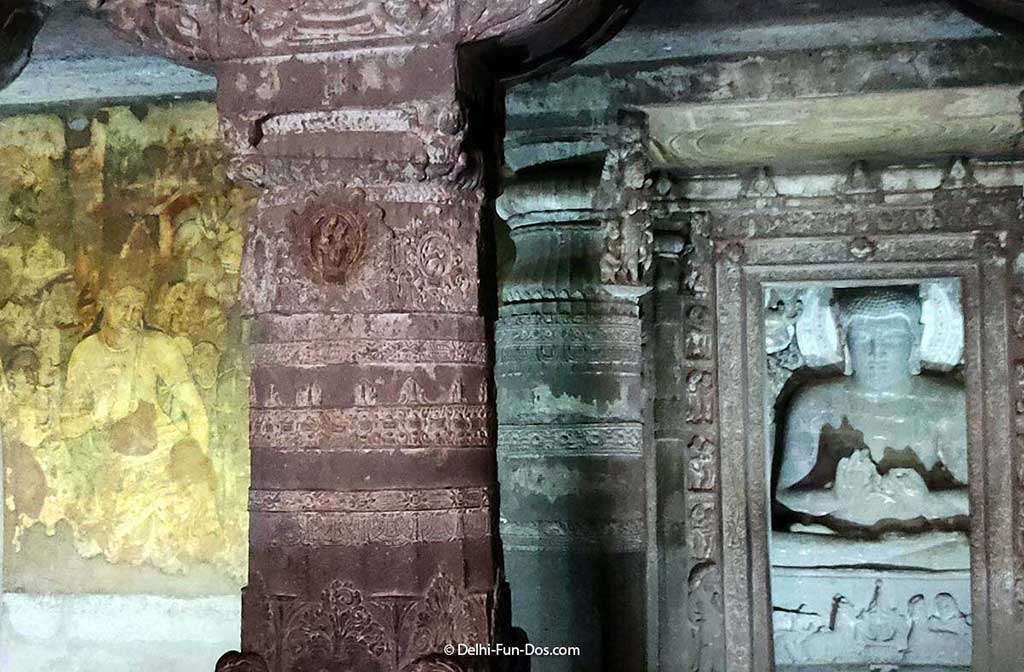
Ajanta Caves are an agglomeration of paintings and sculptures dated between the 2nd century BCE and 5th century CE, a period of 700 years. Ajanta is located in the Aurangabad district of Maharashtra. The artworks in about the 30 caves here are regarded as the finest examples of ancient Indian art. These assay stories and sagas from perhaps an even prior era as if it was yesterday.
Who built the Ajanta Caves?
From our little research, we realise the history of Ajanta Caves comprises many theories and a lot of conjecture. From what we understand, the first set of Ajanta Caves was constructed by the rulers of the Satavahana dynasty in the 2nd century BCE or so. The later Ajanta caves were built by rulers of the Vakataka dynasty. King Harisena of this clan is attributed to building 20 out of the 30 caves in the 5th century or so whereafter, perhaps, the caves were abandoned.
Who discovered the Ajanta Caves?
The Ajanta Caves were a much-visited religious and philosophical site till the 5th century. The famous Chinese traveller Hiuen Tsang visited the Ajanta Caves and wrote eloquently about their beauty and grandeur. The caves were perhaps abandoned at a point and hidden from the public eye for over 1000 years.
The site was discovered in the year 1819 perchance by a British cavalry officer John Smith. He was out in the forests of this area on a tiger hunt. He suddenly spotted what seemed like a man-made structure among the thick foliage. On exploring he chanced upon a sculpted cave door and beautifully painted walls inside. More caves in the adjacent areas were discovered thereafter. This was perhaps the most breathtaking discovery in the art history of India.
What is the theme of Ajanta paintings and sculpture?
It is believed that the Ajanta Caves were created as monasteries comprising prayer rooms, meditation halls and cells that were perhaps living quarters of the monks. The shrines were called chaityas while the living quarters were called viharas. The residential cells were extremely austere with very little ornamentation. The prayer halls and the shrines were carved or painted.
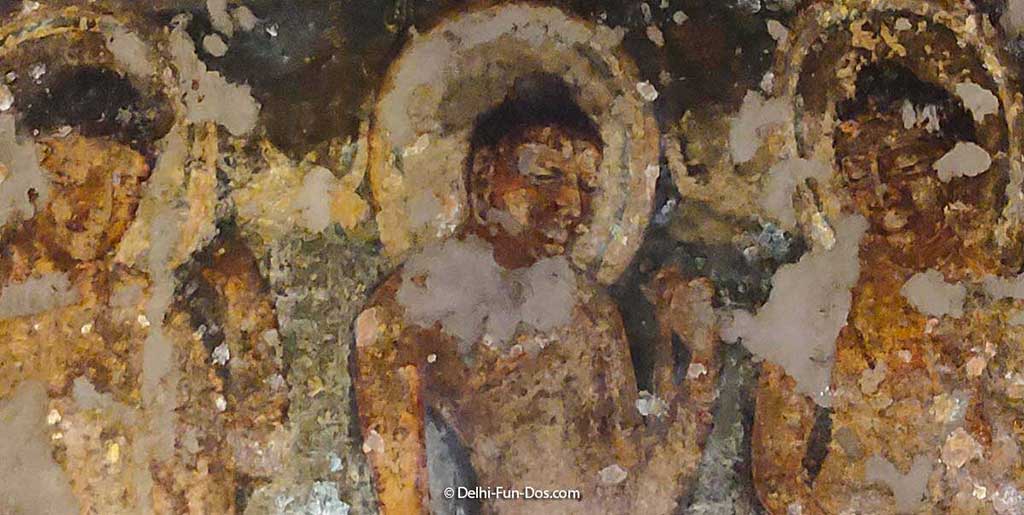
Ajanta paintings and art depict Buddhist religious art. The common themes are stories from the life of Buddha, tales of Jataka from the past lives of Buddha and stories from the lives of Bodhisattva. A Bodhisattva is someone who is on the path of enlightenment or becoming a Buddha.
The artwork also reflects monks, common people and scenes from day to day lives. The ceilings are adorned with floral patterns and somewhat gimmicky designs such as multiple animals with a single head. Although the guides elaborate a lot on these ceiling paintings, in our opinion, the real treasures are whatever is left on the walls.
Trip to Ajanta
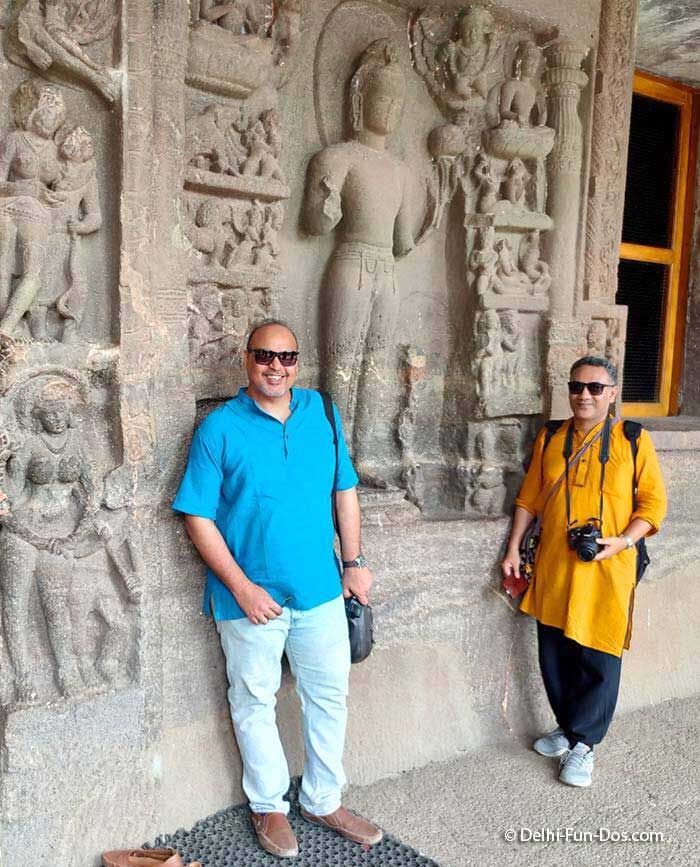
We had heard so much about Ajanta paintings that notwithstanding many impediments, and years of wait, we finally made the journey.
It was a bumpy 3 hours long ride given that the 100 km road between Aurangabad and Ajanta was under severe repair. Thereafter we bought tickets, took an internal shuttle bus, then walked up the hill to the entry point. But once we came out of the other side of the doorway, we could see like a horse-shoe shaped crescent of carved ornamentation across the hill. The hill faced a gorge formed by the Waghora River that filled up only during monsoons. The spectacle caught us by surprise and it took some time to adjust our vision.
Paintings of Ajanta Caves
The first cave immediately after the entrance is called cave no. 1 not because of its antiquity, but its location. It has been estimated that this cave was built in the 5th century, the last phase in the creation of Ajanta.
Paintings of Bodhisattvas Padmapani and Vajrapani
The cave had a simply sculpted portico that did not prepare us for the extravaganza inside. The walls and ceilings were richly painted. A calm Buddha statue in the sermon posture was visible in the far-end sanctum sanctorum. The famous paintings of Bodhisattvas Padmapani and Vajrapani adorned this cave. These paintings moved us so deeply that we created a standalone post.

The paintings of Ajanta were more than 2000 years old. What struck us is that these looked so contemporary. The techniques, forms, postures, bright but tasteful colours and the eye for details, all indicated to a confident set of artists. These clearly looked like commissioned artwork executed with professional fluency, as opposed to a free-spirited approach. Yet, somehow, the rhythm in all the paintings and the flow across the caves remained intact.
The Ajanta murals were not directly painted on cave walls. The surfaces would have been coated with layers for smoothening and finally plastered with lime or chuna to form the base for paintings. The technology could be compared with the European fresco technique that developed many centuries later.
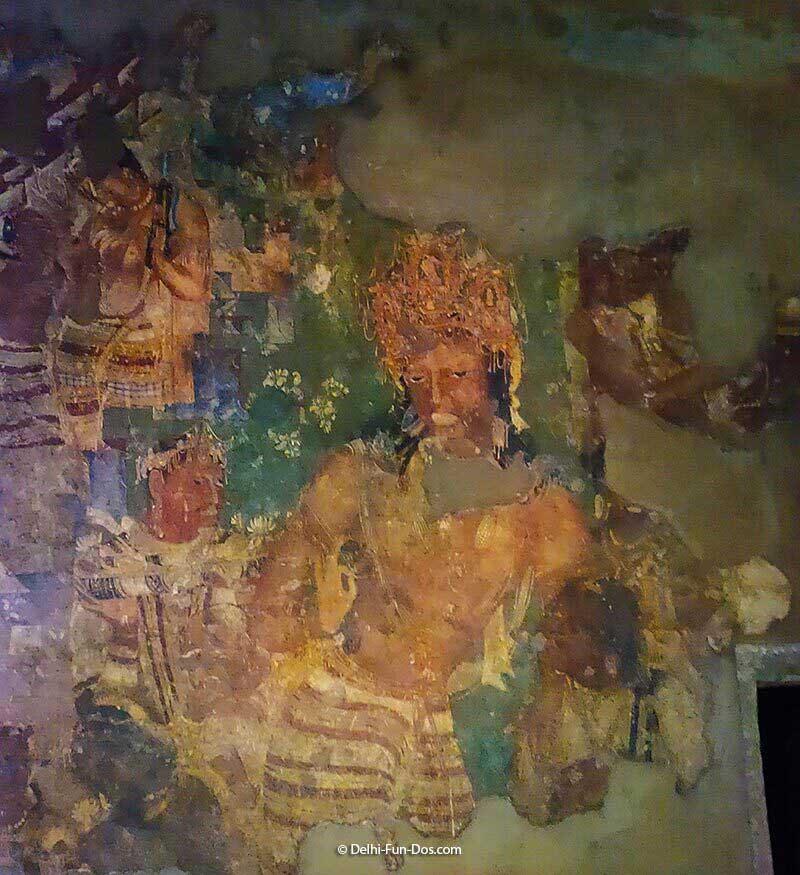
Ajanta paintings were made with natural colours derived from roots, barks, flowers, metal or gemstones like coral and lapis lazuli. Much of the paint has peeled away. But in whatever remained, the colours were still bright and their sharpness conveyed what the artist was trying to depict.
All the characters in the paintings, including animals, conveyed an expression befitting the story being told. Even minor characters had not been ignored. Calmness, joy, sorrow, shock, surprise, romance, detachment – these were all so evident. The people depicted huge diversity. Chinese and African anatomical features established that people from these races would have also visited India in that era perhaps for trade, pilgrimage or knowledge exchange programs.
Ajanta paintings – the first style-mag
A special mention would be the clothes and jewellery that were painted on the various characters here. There was a free-flowing aesthete replete with elaborate ornaments of pearls and other distinct gems. The footwear often resembled sandals and pump shoes that we are so used to wearing now. The hairstyles were complex with puffs and braids and one could see how perhaps the first stylists of India would have visualized fashion of that era.
Buddha-Yashodhara-Rahul painting in Ajanta Cave 17
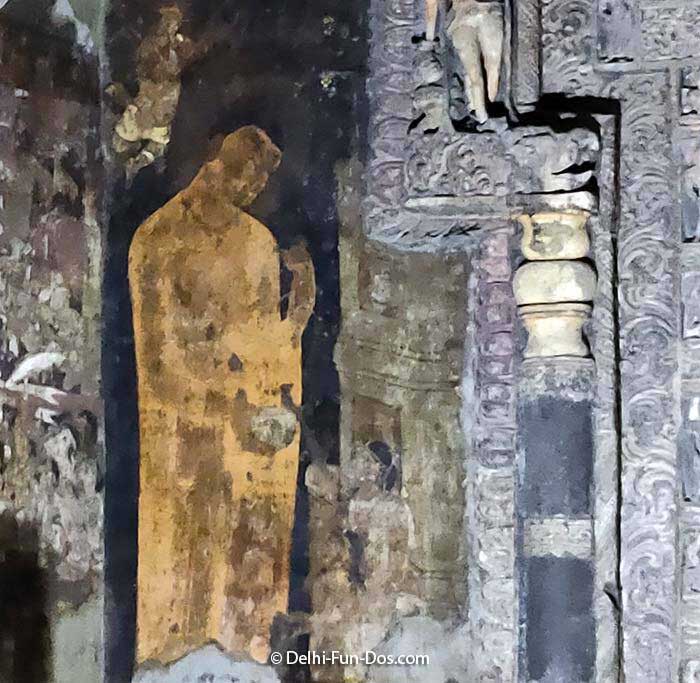
This post would remain incomplete if we did not mention the Buddha-Yashodhara-Rahul painting in cave 17.
At the far end of the cave, beside the sanctum sanctorum was a painting that depicted a poignant episode in the life of Buddha.
It is well-known fact that Prince Siddhartha deserted his wife Yashodhara and newborn son Rahul when he left home to meditate and achieve enlightenment. After Siddhartha came back to Kapilavastu on attaining enlightenment and becoming the Buddha, he came to meet his wife at her door. Yashodhara sent their son, young Rahul to Buddha for seeking his father’s inheritance and the little boy left with him to become a monk. This moment was beautifully visualized in the painting in this cave.
A huge Buddha, a little obscure, had been painted on the edge of the left wall. He had a subtle glow like a divine halo and the large size depicted that Buddha had grown big in stature after enlightenment.
The paintings of Yashodhara and Rahul on the adjoining wall were much smaller and showed many details. Yashodhara’s expressions caught our attention. She looked sad, awed and upset all at the same time. The sorrow of imminent parting with her little son was evident on her face. Little Rahul looked at his father with devotion like literally hi “Big Guy”. We spent some time trying to look at this painting and it touched our hearts.
Sculptures of Ajanta Caves
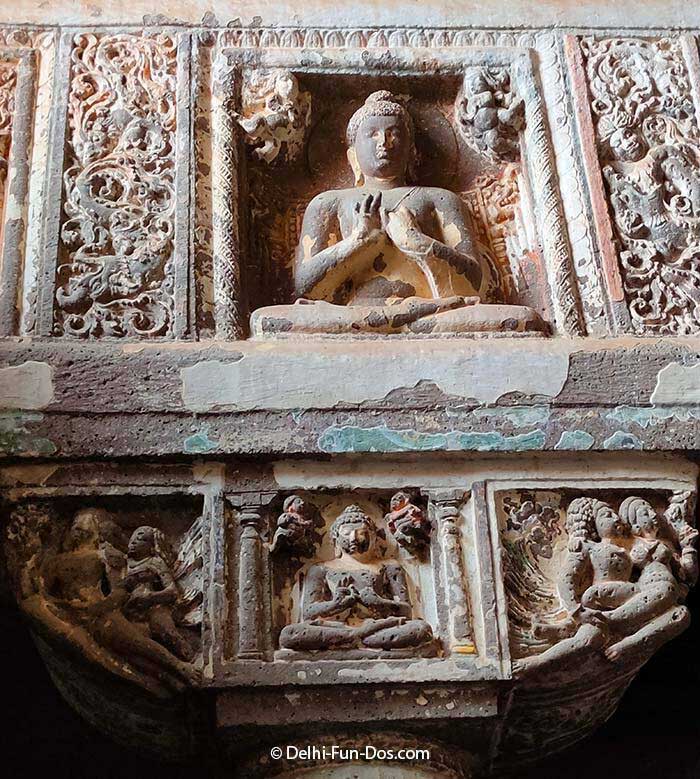
Many of the Ajanta Caves were not about paintings but sculptures. As the theme of Ajanta, the sculptures were also about the life of the Buddha.
In the early Hinayana Buddhist period, it was the practice to represent Buddha with symbols such as The Bodhi Tree, the Wheel, or Buddha’s footmarks. In the later period of Mahayana Buddhism, statues of Buddha in human form were carved. We saw both styles of artwork here. Apparently, all the statues of Ajanta had coatings and paint. But these layers had worn off over time and some statues had been defaced. Nonetheless, the statues of Ajanta had remarkable grace, grandeur yet restrain and the facial expressions depicted a gamut of emotions. It did remind us a little about other Indian sculptural extravaganzas we had witnessed in Khajuraho or Dilwara or Mitawali. Yet, it was the serenity that set the Ajanta sculptures apart.
Ajanta Cave 19
Among all the sculpted caves that we visited at Ajanta, we were most impressed with Cave 19. It had a horse-shoe arched window on the outside façade with a pointed head, like an Indian lamp. There were various statues of celestial guards and other characters flanking the gateway. The statue of the Naga King and his consorts seamlessly depicted his regality in stone. Cave 19 was a Chaitya or a Buddhist prayer hall (as differentiated from Vihara, the residence of monks). Centrally carved in the horse-shoe shaped cave was a huge stupa with a beautiful statue of Buddha in standing posture. The surrounding columns had more statues of the Buddha, hermits, flying couples, musicians and so on. The roof of this cave was carved most interestingly and looked like a giant ribcage.
Ajanta Cave 26 – Mahaparinirvana
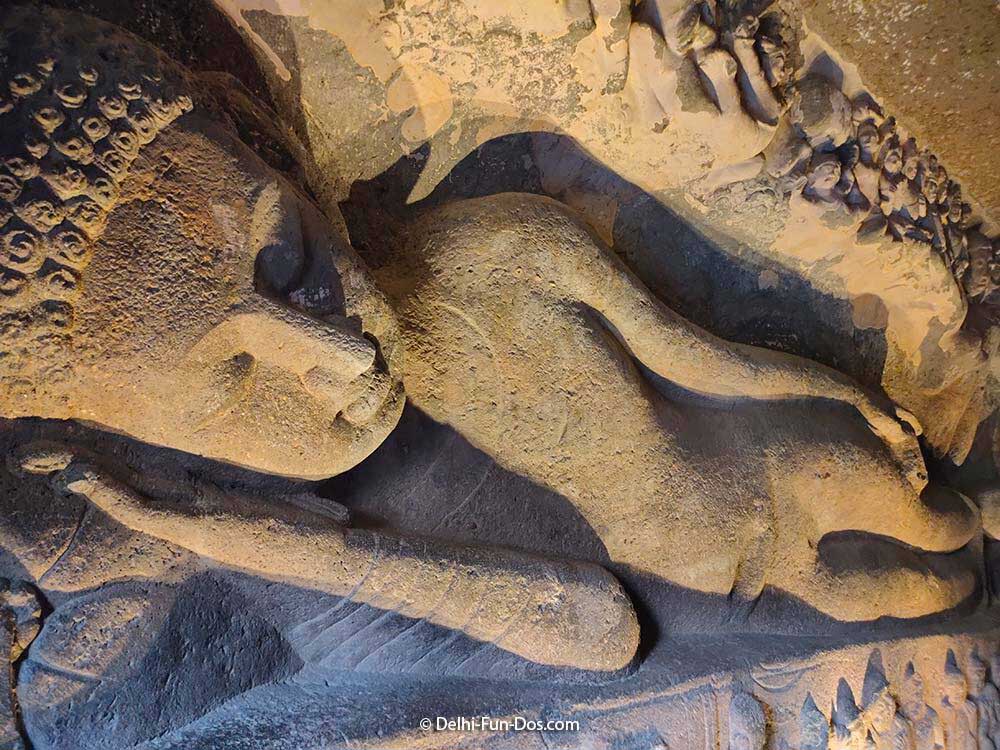
The other sculpted cave of Ajanta that should not be missed is no. 26. This was the last cave that we visited and what a befitting end was that!
There was an exquisitely carved 24 ft. long statue of reclining Buddha in this chaitya. This was the Mahaparinirvana form of Buddha at the time of his demise. The eyes were shut and the head was resting on his right arm. Monks and disciples had been carved and they were seen to have their heads bowed in reverence and sorrow. The calmness on the face of the Buddha, as well as his relaxed posture, was succour to our eyes tired from witnessing all the extravaganza of Ajanta. There were many other interesting carvings here like a tree with monkeys. One could see that the designers of these space perhaps thought of balancing out the heaviness of Buddhist religious themes with simpler designs.
Can the paintings and sculptures of Ajanta be compared?
We wonder what an art researcher would say on this topic. Paintings and sculptures are dissimilar visual mediums and it should be difficult to compare these forms. Yet, it is the paintings of Ajanta that stayed with us more than the sculptures. There are perhaps two reasons for that.
Firstly, the paintings of Ajanta look anything but ancient. The detailed visualization of the designers of these walls, as well as the high dexterity of the artists, made the paintings a rare visual delight that was most modern in approach. Most of the paintings related stories and episodes. Consequently, these had a certain dynamism that at times, the series of paintings looked like cinema where the characters were smiling down on us from days of yore.
Ajanta Caves replica
To ease the pressure on Ajanta Caves, the Maharashtra Tourist Development Corporation has recently created replicas of some of the Ajanta caves. The most modern technologies from across the world have been used for this project. Nonetheless, by the pictures we have seen, the new paintings lack the rhythm, subtlety, and dynamism of the original paintings. And the original paintings were created with the simplest tools available 2000-plus years ago.
Secondly, there are many beautiful sculpted temples all over India including the Kailasha Temple at Ellora. We are fortunate to have seen some of these and bow our heads to the beauty as well as the effort. There are fewer shrines with paintings especially going back 2200 years. Although a lot of Ajanta paintings have peeled off, whatever remains is still enough to give a visitor goosebumps. Perhaps this aspect makes the paintings of Ajanta more exclusive than the sculptures of Ajanta. Yet, both these forms are iconic and deserve the utmost attention.
Also Read: Kailasa Temple at Ellora Caves
How to reach Ajanta Caves from Delhi
Ajanta and Ellora are extremely well-connected with the rest of India. We flew from Delhi to Aurangabad, the nearest city and airport. Ajanta is 100 km from Aurangabad. The road between Ajanta and Aurangabad is under repair so it took us about 3 hours by car to cover 100 km. Aurangabad also has a busy railway station and many trains stop here. Ajanta can be covered by road from Mumbai or Pune.
Given the ease of reaching Ajanta and Ellora, we went on wondering, why we waited for so many years for visiting this marvel.
Where to stay in Ajanta
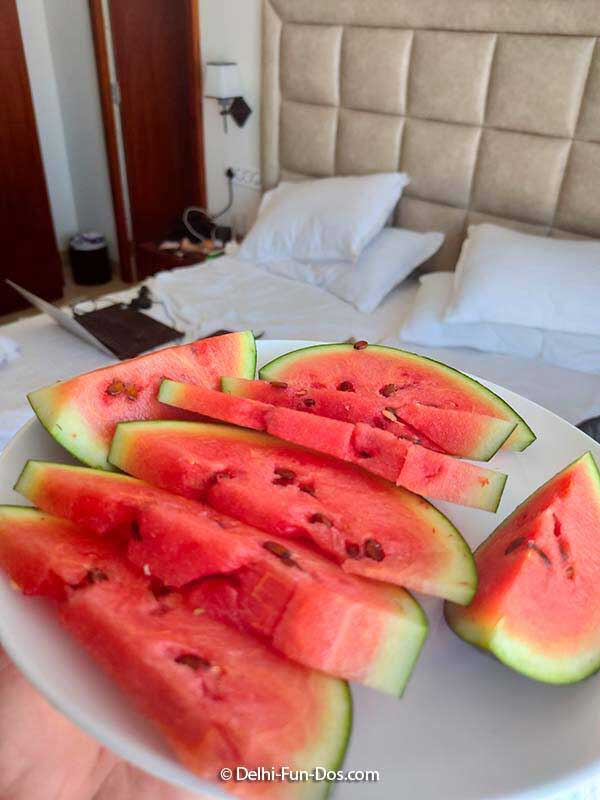
Ajanta is perched above the hill and there is no accommodation in the vicinity. We stayed at Maharashtra Tourism Department Guesthouse in Aurangabad, not far from the airport. There are many hotels and resorts in Aurangabad catering to all kinds of budgets and requirements. If you are going in peak season, all you would have to do is go online. You can also stay in Mumbai or Pune and visit Ajanta from there.
Best time to visit Ajanta
A trip to Ajanta Cave is an arduous physical activity that involved walking and being outdoor. Hence, in our opinion the best time to visit these caves are winters. In this season you are less exhausted and can absorb more of the spectacle.
The season that is absolutely avoidable is summer. Maharashtra has very hot summer months. A trip to Ajanta could be very depleting and exhausting leaving you continuously wiping your sweat and sipping gallons of water.
Pro-tip
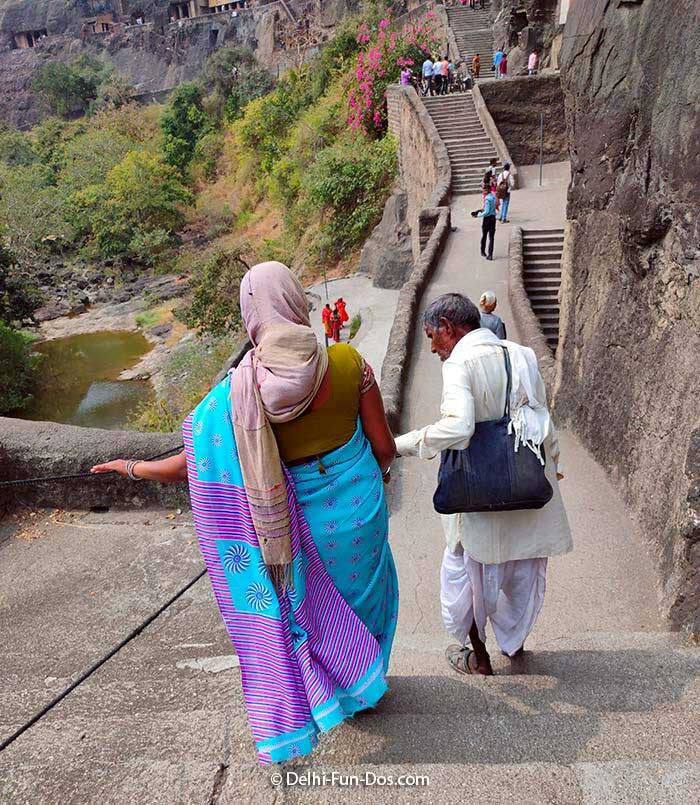
- Ajanta Caves are closed on Mondays. Ellora Caves are closed on Tuesdays. Do plan your trip accordingly.
- Keep at least a day for Ajanta Caves. Given that you would be travelling from afar, any time less than that may not justify your effort.
- Do take a guide not only for the stories but also they carry flashlights to illuminate the dark caves that are otherwise devoid of strong light.
- Carry some dry food and water. Once you reach the cave area, going back to the refreshment stall at the entry point is a long exercise.
- Wheelchairs and palanquins are available for people with mobility issues. You can experience Ajanta fairly well even on these arrangements.
- Last but not least, Ajanta and Ellora Caves are far from each other and should not be attempted in a day.
Pin it
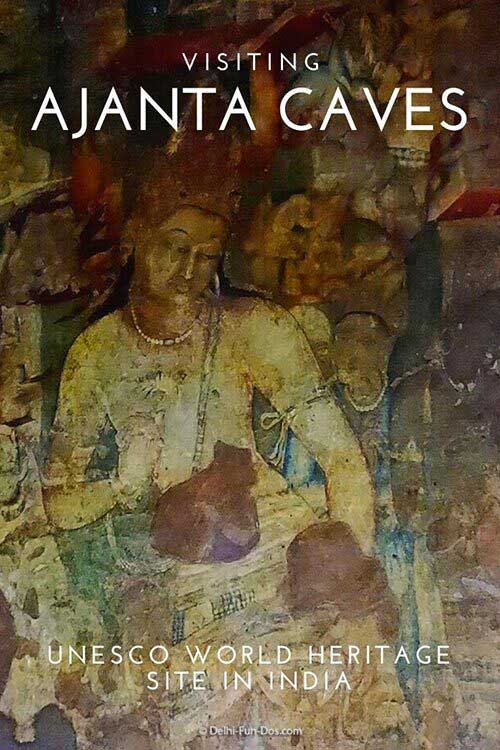


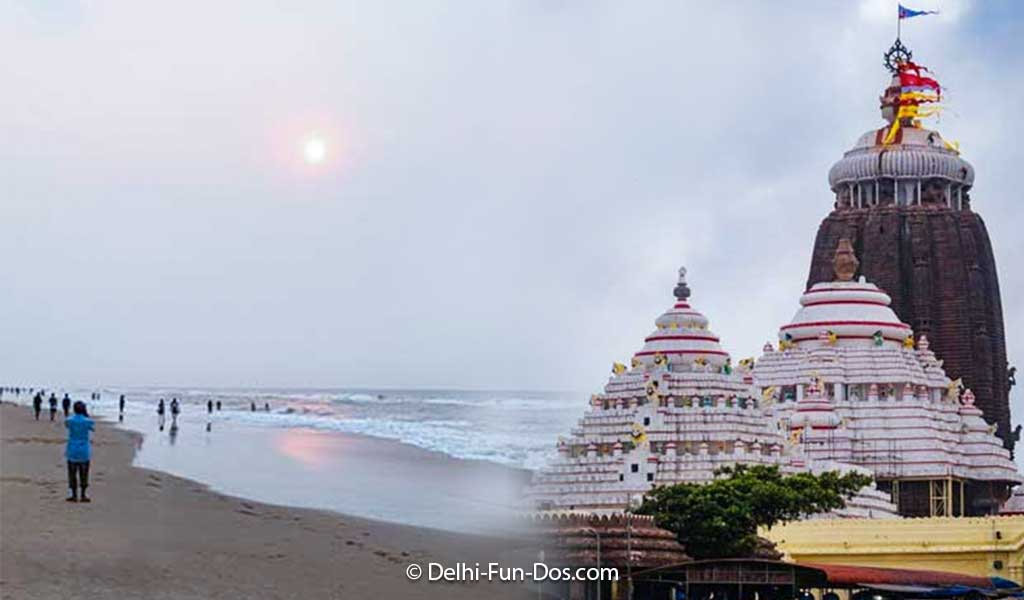
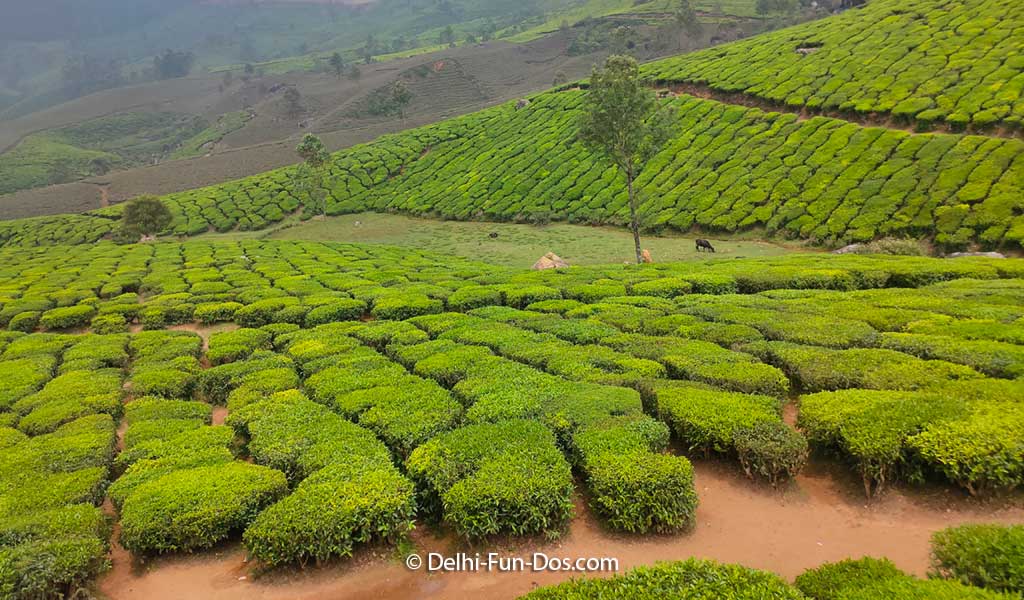
This post was like a sea of information about Ajanta and Ellora caves. I am hoping that travel would become normal soon and I’ll get to see these caves this year.
Keeping our fingers crossed too.
Visited Ajanta Ellora 12 years back. Such a magnificent place. Thanks to your detailed description, I went down the memory lane.
Visiting this place was on my wishlist since long. I loved reading about the caves and surely planning my next visit there soon.
I would love to visit these caves as these places have so much historic value and being a traveller i would surely give it a visit
Totally worth..
I loved reading about Ajanta and Ellora caves. Though I’ve heard a lot about this, the details shared here were interesting and fun to read. These caves are indeed very beautiful and a marvel in itself.
They are marvel and infact almost incredible!